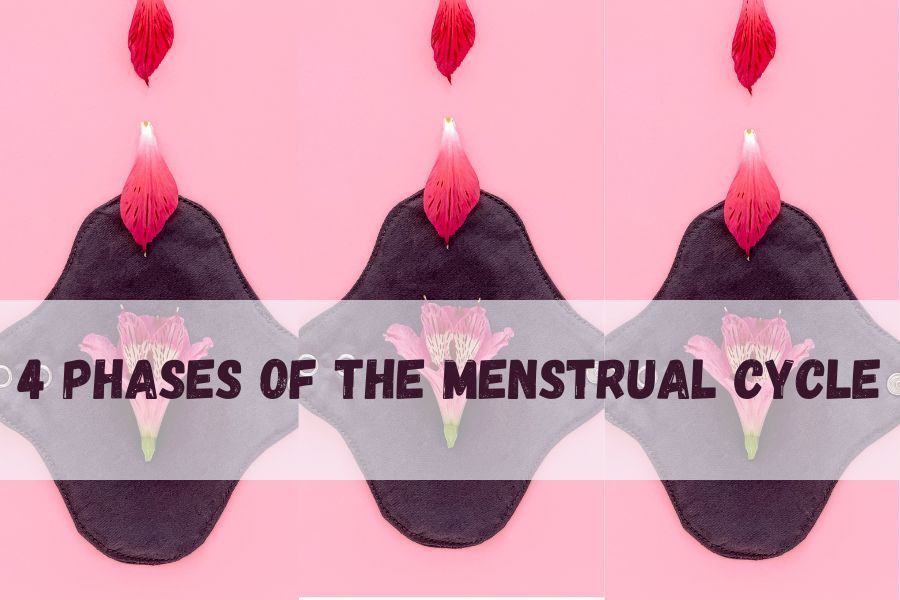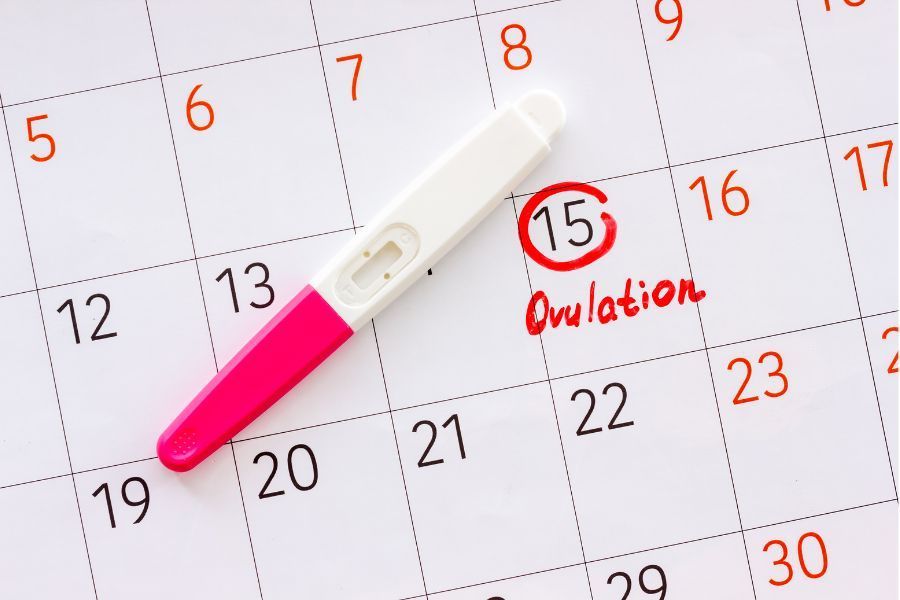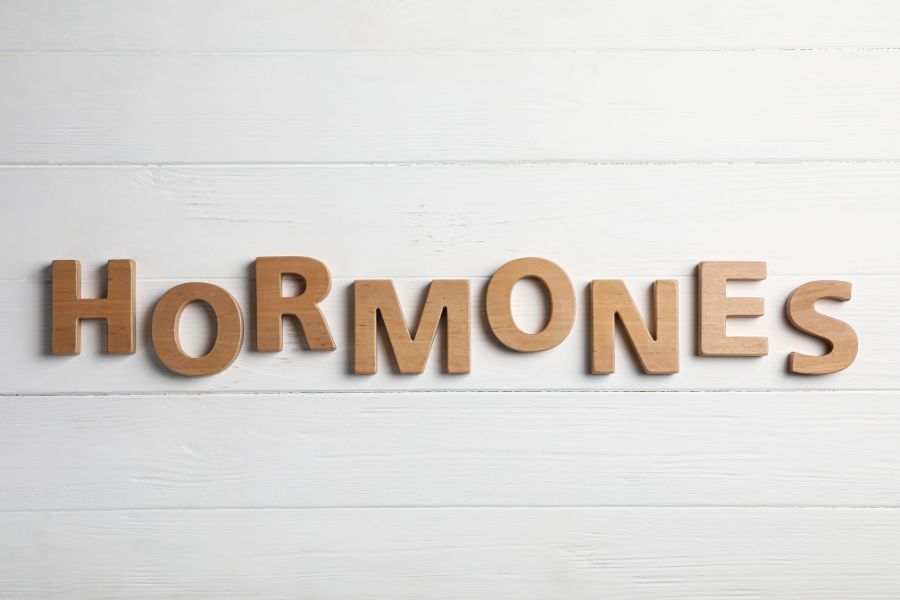You may have heard about the 4 phases of menstrual cycle, but what exactly are they and how do they affect our bodies? In this document, we will explore the different phases of the menstrual cycle, their respective symptoms, and the hormones that play a crucial role in our reproductive health.
This blog is about the 4 phases of the menstrual cycle

Overview of the Menstrual Cycle
The menstrual cycle is a biological process that most people with female reproductive systems experience from puberty until menopause. This cycle, which typically lasts between 21 and 35 days, is centered around preparing the body for potential pregnancy. It comprises of four main phases: The Menstrual Phase, The Follicular Phase, Ovulation, and The Luteal Phase. Each phase is associated with specific hormonal changes and symptoms. Understanding these stages can provide valuable insight into reproductive health and help identify any potential abnormalities.
Understanding the menstrual cycle is paramount for many reasons. It allows individuals to track their cycles, identify any irregularities, and take preventative measures if necessary. By recognizing the signs of each phase, one can better predict their fertility window, helping in family planning or avoiding unwanted pregnancies. Furthermore, understanding the menstrual cycle can lead to enhanced body awareness, fostering a more positive body image and self-esteem. Finally, it enables effective communication with healthcare providers, promoting proactive, informed conversations about reproductive health, and contributing to early detection of medical conditions like endometriosis or polycystic ovarian syndrome (PCOS).
Phase One: Menstrual Phase
What is happening during the menstrual phase?
The menstrual phase marks the first day of bleeding and lasts for approximately 3 to 7 days. The uterus sheds its lining, leading to vaginal bleeding, also known as menstruation or a period. During this time, hormone levels drop significantly, particularly estrogen and progesterone. This drop triggers the body’s release of follicle-stimulating hormone (FSH), which stimulates the growth of a new egg in one of the ovaries.
What are some symptoms during the menstrual phase?
The most common symptom during this phase is vaginal bleeding, ranging from light spotting to heavier flow. Many people also experience mild cramping, bloating, breast tenderness, and fatigue. These symptoms can vary from person to person and cycle to cycle.
Phase Two: Follicular Phase
What is happening during the Follicular phase?
The follicular phase begins after the menstrual phase and lasts for about 7 to 10 days. During this time, FSH stimulates the growth of several follicles (fluid-filled sacs) in the ovaries, each containing an egg. These follicles produce estrogen, which thickens the lining of the uterus in preparation for a potential pregnancy.
What are some symptoms during the follicular phase?
As estrogen levels increase, many people experience a boost in energy and mood during this phase. However, some may also experience PMS-like symptoms such as bloating, breast tenderness, and mild cramping. Additionally, some may notice an increase in vaginal discharge.

Phase Three: Ovulation Phase
What is happening during the ovulation phase?
Ovulation is the release of a mature egg from one of the ovaries. It occurs around day 14 of a 28-day cycle, although this can vary. High levels of estrogen trigger the body to release luteinizing hormone (LH), which causes ovulation. The egg then travels down the fallopian tube, where it can potentially be fertilized by sperm.
What are symptoms during the ovulation phase?
Some people may experience mild abdominal pain or cramping during ovulation, known as mittelschmerz. Additionally, some may notice an increase in vaginal discharge that is clear and stretchy, similar to raw egg whites.
Hormonal activity during this phase:
Estrogen levels peak during ovulation, and LH levels also surge. Additionally, progesterone levels begin to increase, thickening the uterine lining even further.
Phase Four: Luteal Phase
What is happening during the luteal phase?
The luteal phase follows ovulation and typically lasts for about 14 days. Once the egg is released from the ovary, the ruptured follicle turns into a structure called the corpus luteum, which produces progesterone. Progesterone prepares the uterus for a potential pregnancy by thickening its lining even more. If fertilization does not occur, the corpus luteum breaks down, and hormone levels drop, leading to the start of a new menstrual cycle. If fertilization does occur, the corpus luteum continues to produce progesterone until the placenta takes over.
What are some symptoms during the luteal phase?
During this phase, many people experience PMS symptoms like bloating, breast tenderness, mood swings, and food cravings. Some may also experience premenstrual spotting or mild cramping.
Hormonal activity during this phase
Progesterone levels peak during the luteal phase, and estrogen levels also remain high. However, if pregnancy does not occur, these hormone levels will drop, leading to menstruation.

The Importance of Proper Hormonal Balance
Hormones are essential chemical messengers in the body that regulate a wide range of bodily functions such as metabolism, growth and development, mood, and reproductive health. These powerful substances are produced by various glands in the endocrine system and work together to maintain balance within the body.
Maintaining proper hormonal balance is vital for overall health and well-being. Imbalances in hormones can lead to a variety of health issues, ranging from physical symptoms such as weight gain, fatigue, and skin problems to emotional and mental health concerns like mood swings, anxiety, and depression.
Having an optimal hormonal balance is particularly crucial for women as they experience significant hormonal fluctuations throughout their lives due to menstrual cycles, pregnancy, childbirth, and menopause. Hormonal imbalances in women can lead to issues such as irregular periods, infertility, and postpartum depression.
In addition to reproductive health, hormones also play a significant role in regulating metabolism and energy levels. When the body’s hormonal balance is disrupted, it can lead to weight gain or difficulty losing weight, as well as chronic fatigue.
Mood and mental health are also heavily influenced by hormones. Hormonal imbalances can contribute to mood swings, irritability, and even clinical conditions such as anxiety and depression.
Proper hormonal balance is essential for both men and women, regardless of age or gender. Imbalances in hormones can affect overall physical and mental well-being, making it challenging to lead a healthy and fulfilling life.
There are several factors that can disrupt hormonal balance, such as stress, poor diet and nutrition, lack of physical activity, and certain medications. It is vital to address these factors and make lifestyle changes to help maintain proper hormonal balance.
Some ways to promote hormonal balance include eating a healthy, balanced diet rich in essential nutrients, engaging in regular physical activity, managing stress through relaxation techniques or therapy, and avoiding substances such as alcohol and tobacco.
In addition to lifestyle changes, hormone replacement therapy (HRT) may be recommended by a healthcare professional for individuals experiencing severe hormonal imbalances. HRT involves taking medications or supplements to help regulate hormone levels in the body.
By understanding the importance of hormones and making necessary lifestyle changes, individuals can take steps towards maintaining optimal hormonal balance and improving their quality of life. So, it is essential to prioritize hormone health and seek professional help if experiencing significant imbalances. Remember, a balanced body leads to a balanced mind and a healthier life overall. Let’s strive for proper hormonal balance and thrive.
Conclusion
In conclusion, understanding the four phases of the menstrual cycle can provide valuable insight into reproductive health. The menstrual phase is characterized by vaginal bleeding and a drop in hormone levels, followed by the follicular phase with increased estrogen levels. Ovulation marks the release of a mature egg, triggered by high levels of estrogen and LH. Finally, the luteal phase is characterized by high levels of progesterone, preparing the uterus for a potential pregnancy.
Recognizing the symptoms associated with each phase can help individuals track their cycles, predict their fertility window, and identify any potential abnormalities. It also promotes body awareness and effective communication with healthcare providers about reproductive health. So, it is important to pay attention to our bodies and understand the different phases of our menstrual cycles.
This knowledge can empower us to better take care of ourselves and make informed decisions about our overall health and well-being. So, let’s embrace the natural cycle of our bodies and celebrate it as a beautiful aspect of womanhood. Let’s break the stigma surrounding menstruation and openly discuss it with others to promote reproductive health awareness and empower each other. After all, knowledge is power!
So, let’s continue to educate ourselves and break the stigma surrounding menstruation, one conversation at a time. So be proud of your menstrual cycle and embrace it as an integral part of who you are! Remember – knowledge is power! Let’s use that power to prioritize our reproductive health and take care of our bodies. Let’s celebrate our menstrual cycles and the incredible things our bodies are capable of each month!
References
American College of Obstetricians and Gynecologists. (2019). The Menstrual Cycle. Retrieved from https://www.acog.org/womens-health/faqs/the-menstrual-cycle
Mayo Clinic. (2020). Menstrual cycle: What’s normal, what’s not. Retrieved from https://www.mayoclinic.org/
If you enjoyed this article, don’t forget to share! Check out related post here.
I’m curious to hear about your thoughts on this topic. Please comment below and share so that we can create a more greener and holistic community.

